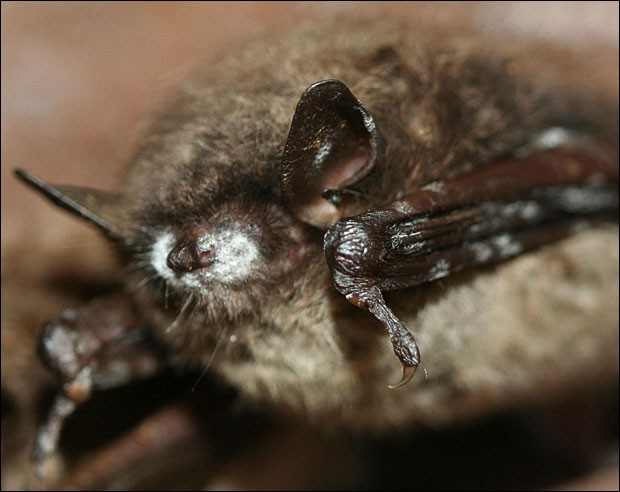Bats in North America continue to suffer at the hands of their latest enemy, the White-nose Syndrome (WNS). This deadly disease has been attacking and wiping out bat populations around the world and sadly bats in Pickering have also become victims. Humane bat removal and prevention can help Pickering bats in their struggle to survive as scientists work towards finding solutions by exploring the effects of treatments, such as UV lighting, on the fungus.
The White-nose Syndrome causes bats to wake up during hibernation and this, in turn, leads to a reduction in their fat stores. The disease which appears as a fungus covers parts of the bat’s body, especially the face and wings and causes irritation which forces the bats to rouse from their deep slumber. Bats are then forced to hunt (in a season that features limited food supplies) or starve to death.
Could UV Lighting be the Hero Bats Need?
The fungus that causes the White-nose Syndrome, Pseudogymnoascus destructans, thrives in winter temperatures, which is why hibernating bats are so vulnerable. Scientists continue to search for ways of eliminating this deadly virus. This search has led to the discovery of inhibitors. UV light is one such solution. The scientists who made this discovery are from the University of New Hampshire and the US Department of Agriculture.
On January 2, these scientists published their study entitled ‘Extreme Sensitivity to Ultraviolet Light in Fungal pathogen Causing White Nose Syndrome’ in the scientific journal Nature Communications. In carrying out the study, they isolated the WNS fungus and applied UV light to it. To be specific, they discovered that the pathogen was unable to repair damage to its cells caused by UV light exposure. As a result, the disease was reduced at a rate of 85% when a low dose of UV light was applied to it and a rate of 99% when it was exposed to moderate strength of UV lights in short bursts lasting just a few seconds.
Experts in wildlife preservation view this as a significant breakthrough in the battle to save bats from the White Nose Syndrome. They are currently brainstorming to find suitable ways of applying the solution directly in order to save the bats. Unfortunately, flashing the UV rays in hibernation sites won’t work as the fungus won’t get treated when it is in hidden areas such as under armpits. Removing bats from their hibernation sites for individual and specialized treatment is also risky as that would mean disrupting their hibernation. But hope remains alive as scientists continue to work at perfecting this WNS cure with the next step in the process is applying the treatment to infected bats.
Bats in Your Home? How the Experts Advise You to React
Bat protection is everybody’s business. But it is also expected that Pickering residents will have issues with bats from time to time as they winged mammals seek refuge in buildings. Your reaction in this situation is crucial especially to the survival of our winged friends. The fact that bats are already facing this incredible challenge to their survival means that we should take extra care when dealing with them, even when they become intruders in our homes.
If bats intrude on your space, wildlife experts advise that you remain calm and get in touch with professional wildlife removal services immediately. Bat removal during the winter is not recommended as it involves disrupting the animal’s hibernation, an act that jeopardizes their survival. If it is absolutely necessary, bat removal in the winter must be done by a professional wildlife technician. Instead of removing bats in the winter, Pickering residents are urged to prevent bat intrusion before the season comes around. Skedaddle’s well-trained, highly experienced staff of wildlife technicians can help you to keep bats out of your home and remove them if necessary. Our safe and humane removal and prevention strategies will ensure that your home is bat free without harming bats.



